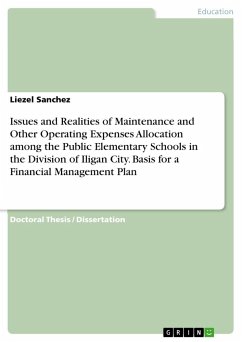
Weighted Student Based Funding and Financial Resource Allocation
Versandkostenfrei!
Versandfertig in 6-10 Tagen
27,99 €
inkl. MwSt.

PAYBACK Punkte
14 °P sammeln!
This book describes the planning and implementation of Weighted Student Funding policy, an equity-driven student-based planning and budgeting policy. It examines four urban district's policy goals, planning and implementation considerations, and how the policy interacted with school sites. While Weighted Student Funding (WSF) has been implemented in several major urban school districts, there are few empirical studies about how WSF policies are derived and implemented. Current efforts to align resources with student need are hindered by a lack of systematic, research-based approaches to select...
This book describes the planning and implementation of Weighted Student Funding policy, an equity-driven student-based planning and budgeting policy. It examines four urban district's policy goals, planning and implementation considerations, and how the policy interacted with school sites. While Weighted Student Funding (WSF) has been implemented in several major urban school districts, there are few empirical studies about how WSF policies are derived and implemented. Current efforts to align resources with student need are hindered by a lack of systematic, research-based approaches to selecting and prioritizing criteria. How do district leaders determine funding criteria, weight them, and evaluate their implementation? The author analyzed criteria, data, and weighting processes used to allocate resources to schools through student based funding. The analyses borrowed three equity concepts from inter-district studies to evaluate intra-district criteria for resource allocations: horizontal equity, vertical equity, and equal educational opportunity. Criteria used are evaluated by whether they are mandated or discretionary.












